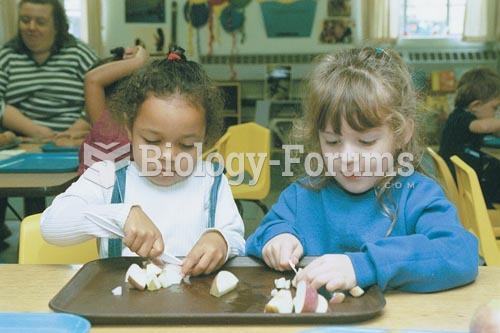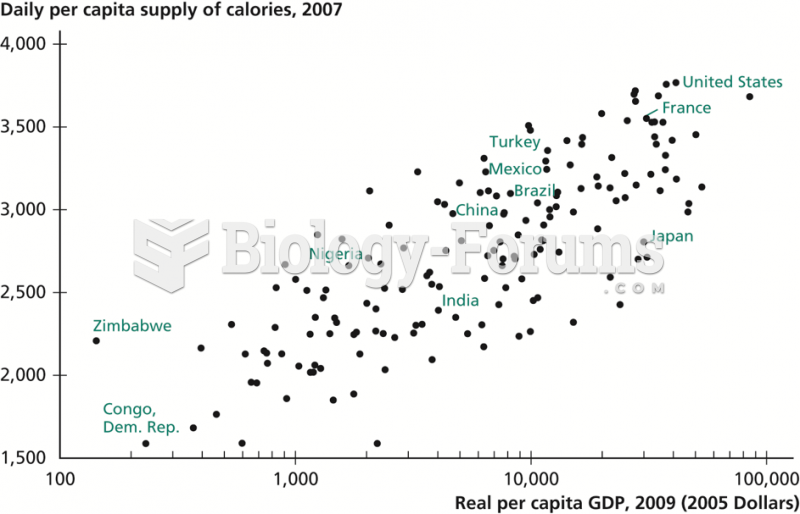Answer to Question 1
Pima Indians of Arizona have the world's highest incidence of type 2 DM.
One-half of adult Pima Indians have diabetes and 95 of those with diabetes are overweight.
The incidence of ESRD is 20 times higher in this group than the general U.S. population.
Members of the Pima tribe have a prevalence of DM 2-5 times higher than Whites.
Gestational DM increases risk of type 2 DM in childhood 10-fold and is the most important risk factor for development of type 2 DM in childhood.
Rates of type 2 DM in adolescent Pima have doubled in the past 30 years.
Members of the Pima tribe have a higher incidence of obesity than the general population.
Periodontal (gum) disease rates are also higher in the Pima populationalso related to DM.
Research conducted with the help of the Pima Indians has shown that before gaining weight, overweight people have a slower metabolic rate, combined with a high-fat diet, and a genetic tendency to retain fat.
The thrifty gene theory, proposed in 1962 by geneticist James Neel, is based on the fact that for thousands of years, populations who relied on farming, hunting, and fishing for food, such as the Pima, experienced alternating periods of feast and famine.
To adapt to these extreme changes in caloric supply, the Pima developed a thrifty gene that allowed them to store fat during times of plenty so they would not starve during times of famine.
This gene was helpful as long as there were periods of famine, but once these populations adopted the typical Western lifestyle (less physical activity and access to a constant supply of calories) this gene worked against them, continuing to store calories in preparation for famine.
The rate of new kidney failure in the Pima is 20 times higher than in other groups (90 of new cases of kidney failure are caused by DM).
American Indians with DM experience chronic kidney disease 6 times more frequently than non-Hispanic Whites.
Especially high rates of diabetes-related kidney disease are seen in the Pima, Sioux, Zuni, Navajo, Oklahoma, and Cherokee tribes and Alaska Natives.
CKD is often the leading cause of death among Pima Indians with DM.
Answer to Question 2
Nutritional problem post-surgery: After surgery, vitamin and mineral deficiencies are very common since the absorptive function of the GI tract is being altered by the roux-en-Y procedure.
- Inadequate vitamin intake (B12) related to decreased absorption as evidenced by reports of adequate vitamin B12 sources in diet with low serum levels.
Another nutritional problem is the fact that the patient is obese.
- Obesity related to excessive energy intake as evidenced by BMI of 59 (BMI >30).
Another post-surgery problem may be that the patient may have a hard time consuming adequate protein because the stomach capacity is reduced but the protein needs are increased.
- Inadequate protein intake related to recent altered absorption and digestion from recent surgery as evidenced by increased estimated protein needs of 75-90 g/day.
- Nutrition-related knowledge deficit related to changes in diet due to recent RYGB surgery as evidenced by patient reports.







